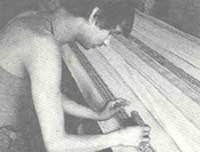All India Report of Sixth Economic Census
The Sixth EC proposes to provide up to date information on number of establishments and number of persons employed therein, activity wise, of all the sectors (excluding crop production, plantation, public
The Sixth EC proposes to provide up to date information on number of establishments and number of persons employed therein, activity wise, of all the sectors (excluding crop production, plantation, public

As early as 1950, the union government had approved in principle the need to reserve certain items of cloth production for the handloom sector. Under the Handloom (Reservation of Articles of Production) Act, 1985, the textiles ministry issued an order stating that certain varieties in 22 items of cloth, including saree, were to be reserved for the handloom sector.

The buzzword these days in Baigachak is the Baiga Mahapanchayat. It is an effort of Nai Disha, a non governmental organisation NGO in Sijhora town of Mandla district, and Ekta Parishad, a large network of grassroots NGOs in central India. The organisati

the Jammu and Kashmir (j&k) High Court (hc) has asked the state government to regulate the trade of shahtoosh shawl-making and shearing of Tibetan antelopes in such a way that the art and livelihood

A handloom trader experiments with traditional medicinal herbs for dyeing garments

Foreign buyers of Indian carpets insist that if child weavers are employed, they will not accept the product. The Indian government and manufacturers must now find a way out to protect a multi crore industry.

While the Uttar Pradesh carpet industry is under increasing pressure to ban child labour, young children in Pali in Rajasthan continue to work in appalling conditions in the 1,000-odd dye and print